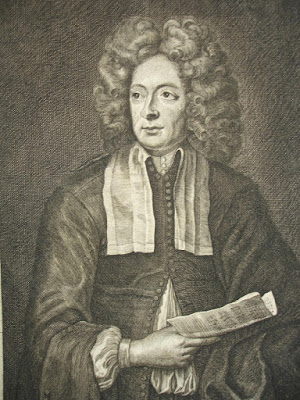Rome.
Arcangelo Corelli was a real star at the age of 17 already.
Ravenna - Bologna - Rome, then, at the age of 37, he was the Master of Music at
the Cardinal Palace. He happened to have patrons of high rank and he had a nice
career; he was a genial program organiser - obviously, in the noble circles of
high society - as we might say today. Famous concert series were organised by
Accademia Arcadia as well as in the lounge of Cardinal Ottoboni where Corelli
introduced and performed the newest pieces on Mondays.
It is weird and
sorrowful that he moved out of the palace in the last years of his life and
kept grieving in spleenful reclusion. He was dead before he turned 60.
Many of his pieces survived. He was keen on violin concertos
and violin - orchestra, a few violins and an orchestra and concertino -
orchestra contrapositions in all variations. It is called concerto
grosso today and the first name coming to our mind at the mention of it is
Corelli.
The piece that nearly all of us know is Concerto Per La
Notte di Natale, the famous Christmas Concerto. It is an old chestnut, played
by each and every orchestra, it has been performed 5 million times, yet, just
like Vivaldi’s Four Seasons it casts off all kind of boredom or overplay or
here-it-comes-again feeling for it is so fine music. There is nothing to do; it
happens that a great hit is really excellent even if it is played trillions of
times.
The average level of performance groped for at random is
delightfully good; the odd case occurs when the oldish records include one that
can be recommended any time.
Also, there are a few phenomenal - Modo Antiquo is such.
It is the 2nd second already that suggests that something
mind-boggling is forthcoming. Then a bit of hiding, some kind of an innocent
slow movement. Listening to it we feel something odd for the few-second
blast-like start and the truth-falsity of the instruments tuned down to
allegedly 415 does not leave us in peace and our subconscious has produced all
kind of variants in anticipation even if it is not familiar to us for we listen
to it for the first time.
The doubt lasts for exactly one and a half minutes then the
real roulade gets started.
The violins are literally whining and there is a genuine
drama, stone-hard rhythm on the other side. And it lasts till the end. It is a
truly grandiose, overarching play. It is not artiness meant for effect or
string-ripping or over virtuoso but pure music touching something deep inside.
This depth is multilayer. It has a metaphysical deepness
peculiar to every fine Early Music record, however, a fine surplus - triumph -
is clearly heard in these days.
Saviour is born.
This performance is oncoming in the street, grabs the
buttons on our coat and shakes us slightly to make us feel the grandiosity of
the moment. You flick forth and back trying to decide whether the concertino or
the orchestra is more to your liking; you cannot decide for both are excellent.
It is sweeping and buoyant, gratifyingly getting rid of the clench of the
counterpoints.
I recommend listening to it two times right away on loud
volume. The rest of the day is guaranteed to be spent in a different mood.
The ensemble is Modo Antiquo led by Frederico Maria
Sardelli; looking at the picture some remote conception passes over us, yes, we
are right, he is a comedian-actor as well.
One more curiosity.
Naples again.
Corelli over 50 and well-known had a concert in Naples in
1708; he played the violin solos himself and the other super star, Scarlatti
was the conductor.
All went absolutely fine, they did it with their whole
heart.
The Viceroy of Naples stood up and left in the middle of the
performance with his company of a hundred...he said that the slow movements
were unbelievably boring...
To us, late descendants they are not.
Highly, highly recommended.
* * *
Translated by Kenesei Andrea
________________________
Thank you for the images.







